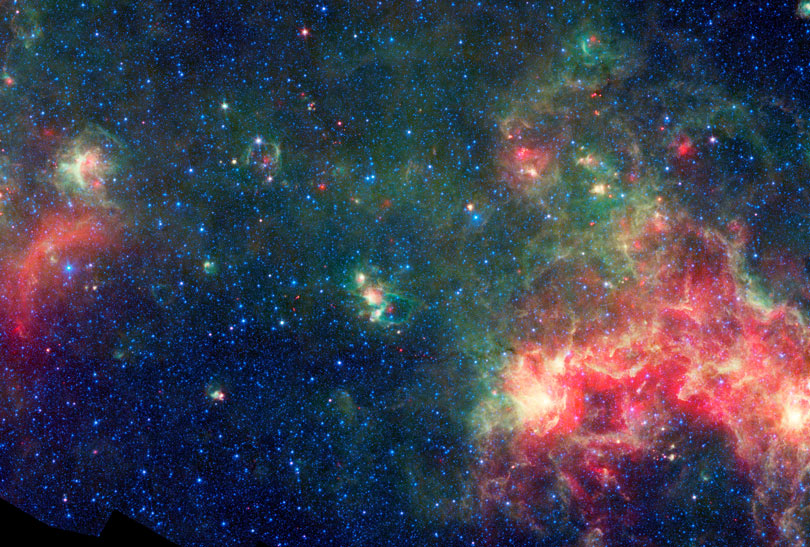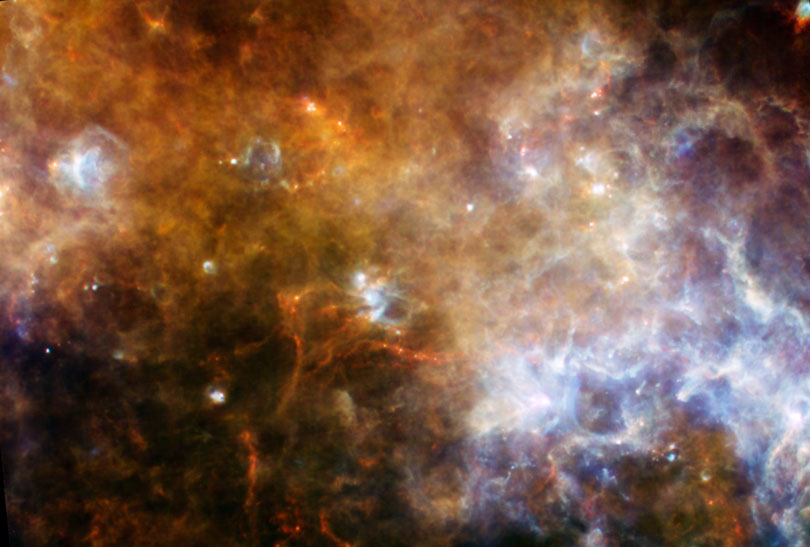- GALAXIES
- INFRARED WORLD
- INTERACTING GALAXIES
- MILKY WAY
- STAR BIRTH
- STAR DEATH
- GALAXIES
- INFRARED WORLD
- INTERACTING GALAXIES
- MILKY WAY
- STAR BIRTH
- STAR DEATH
Milky Way
Southern Milky Way


Mid Infrared:
Default View
Far Infrared:
LESS
MORE
Southern Milky Way
Looking at an otherwise normal patch of the Milky Way that falls within the southern constellation Crux, we see a complex array of dust that is strewn through interstellar space, along with some regions that are furiously forming stars. In mid-infrared light, we see both our galaxy's stars as well as patchy clouds of dust and the bright areas that are forming stars. The view shifts subtly when pushing to longer, far-infrared wavelengths. New, unseen regions of cold dust, falling outside the warmer regions, become visible in red. Some of the densest and coldest filaments of dust, opaque in the mid-infrared image, glow in the far-infrared.
Mid Infrared:
Stars and dust glow alike as we peer deep into the Milky Way in mid-infrared light.
Far Infrared:
Extending to the far-infrared spectrum, we see the hot (blue) and very cold (red) dust in the galaxy.
CREDITS:
Mid-infrared: NASA/JPL-Caltech/Univ. of Wisconsin. Far-infrared: ESA/NASA/JPL-Caltech.